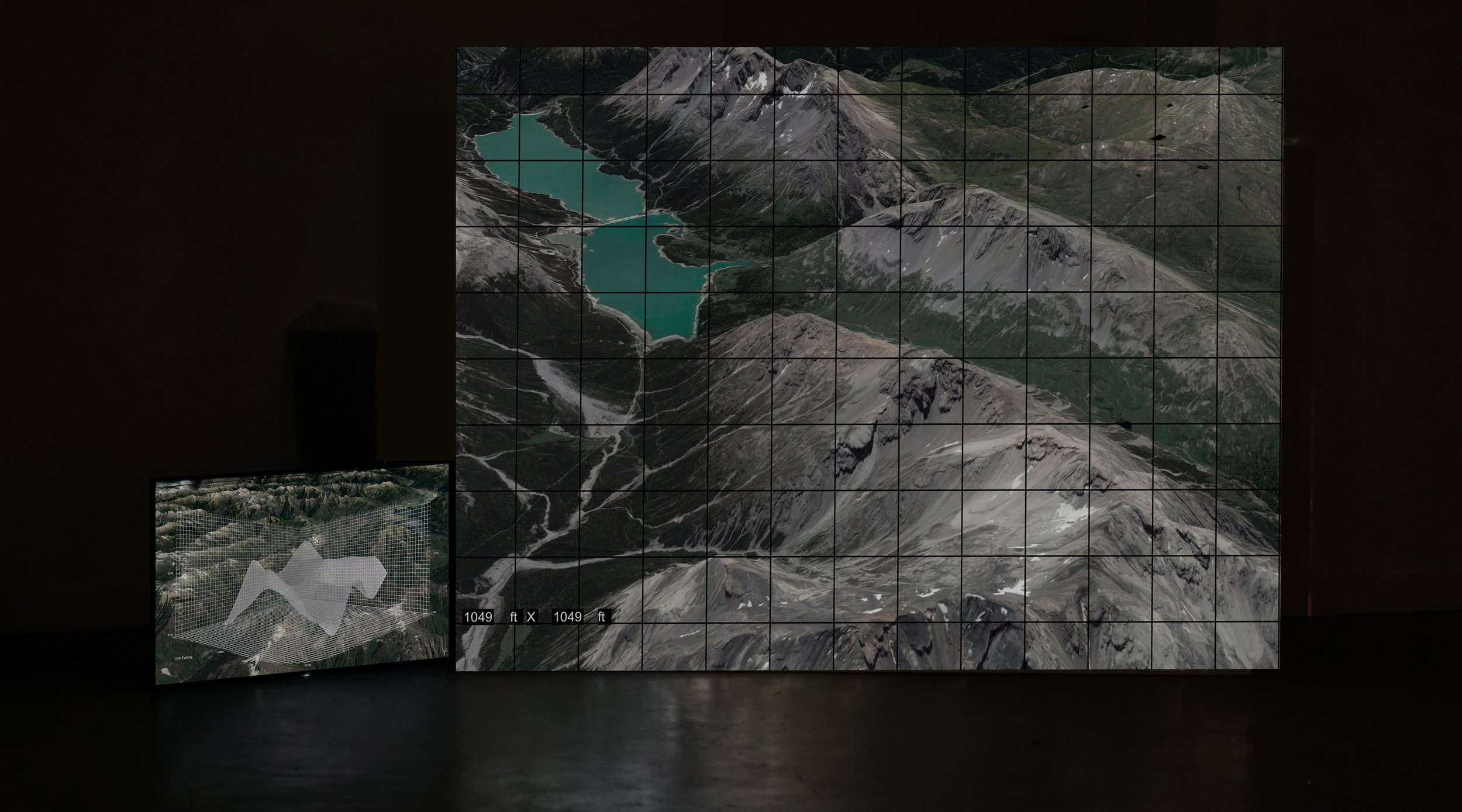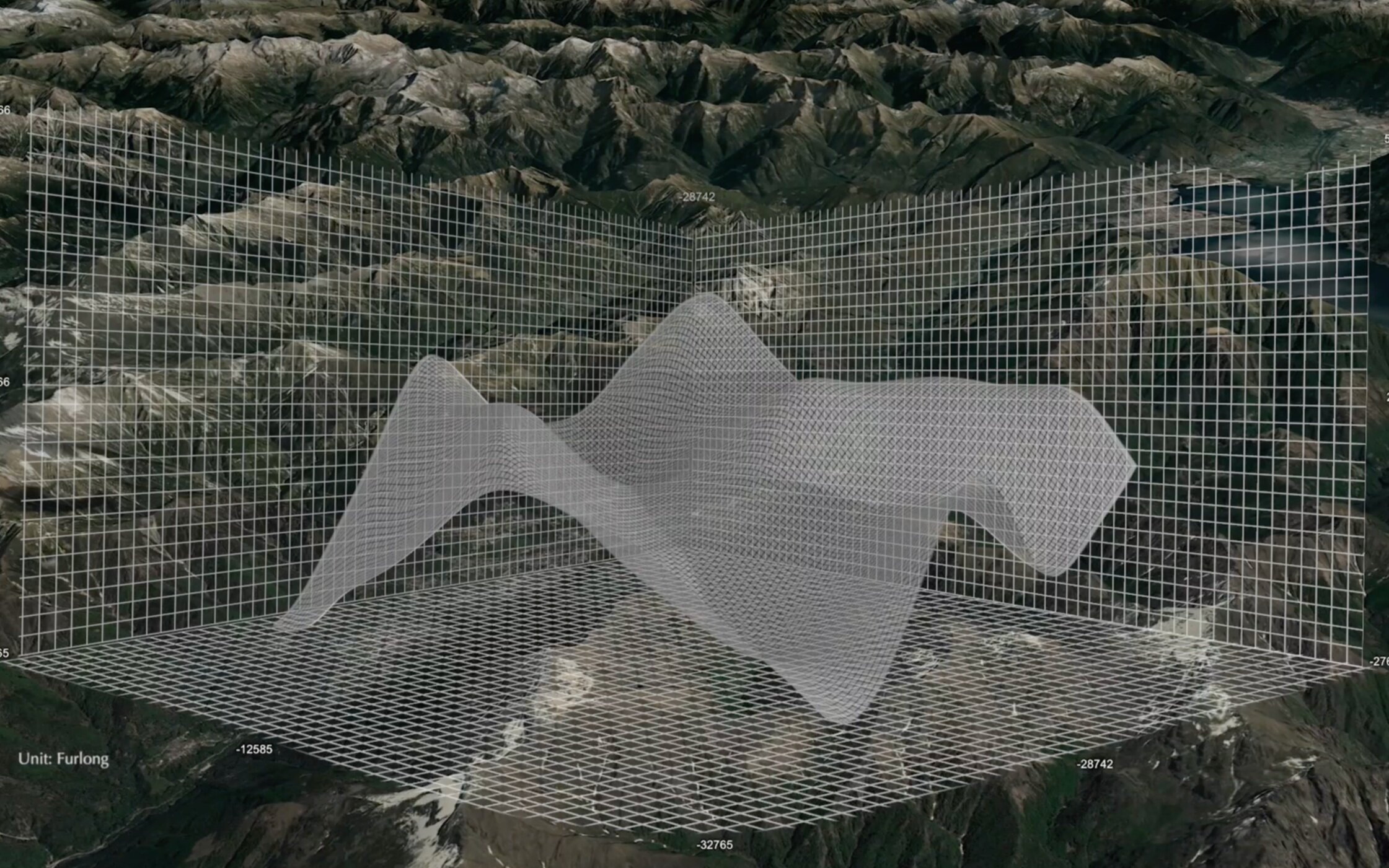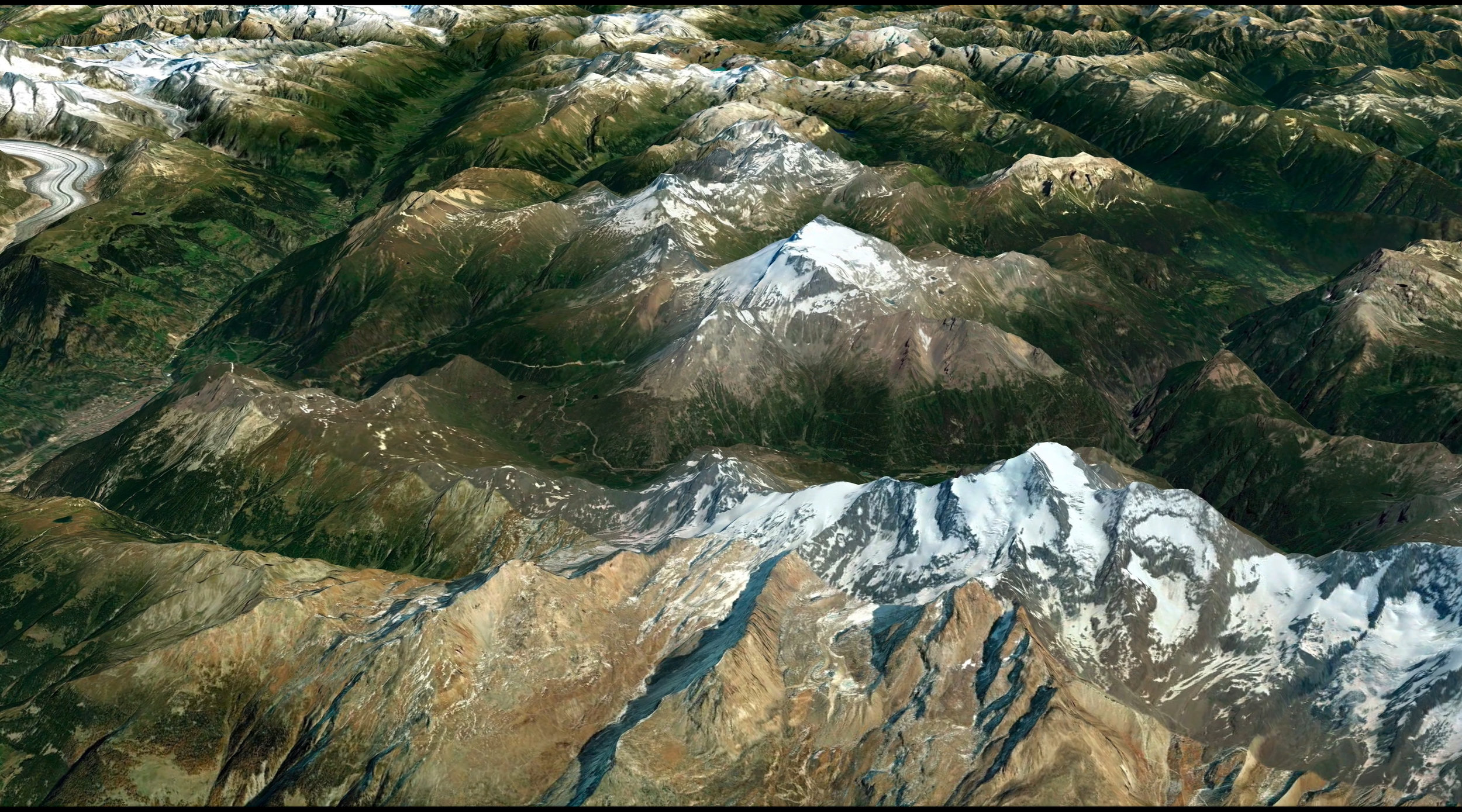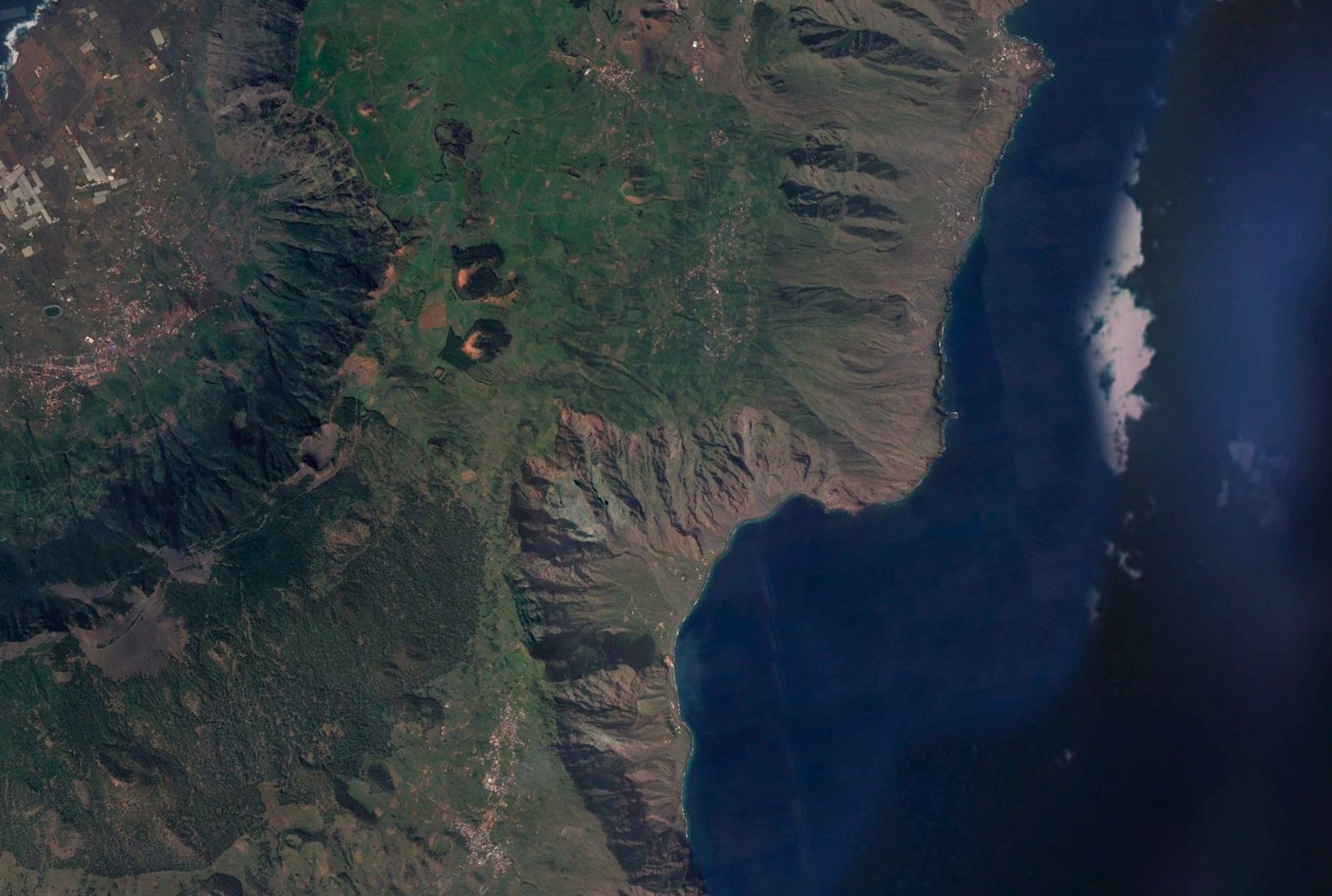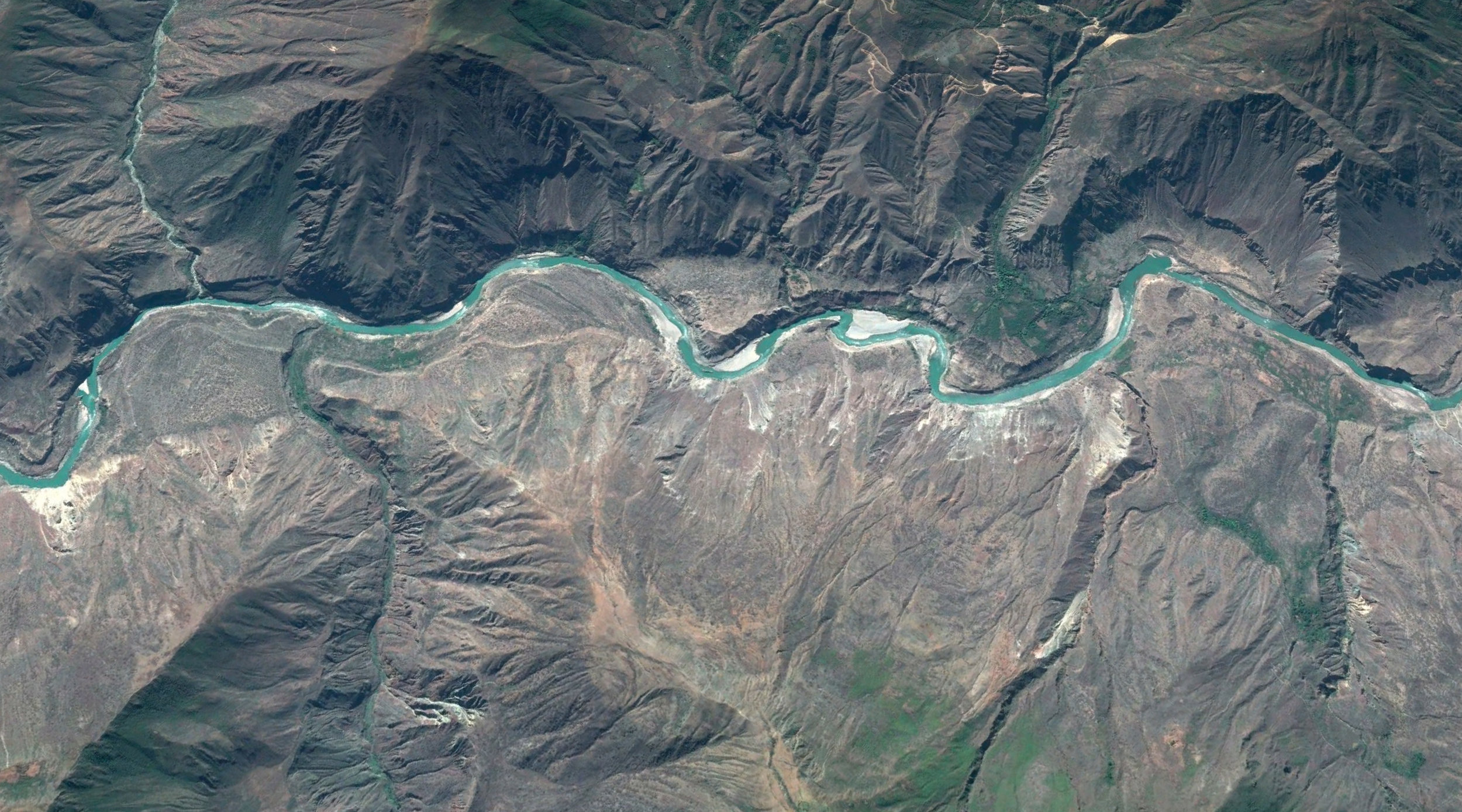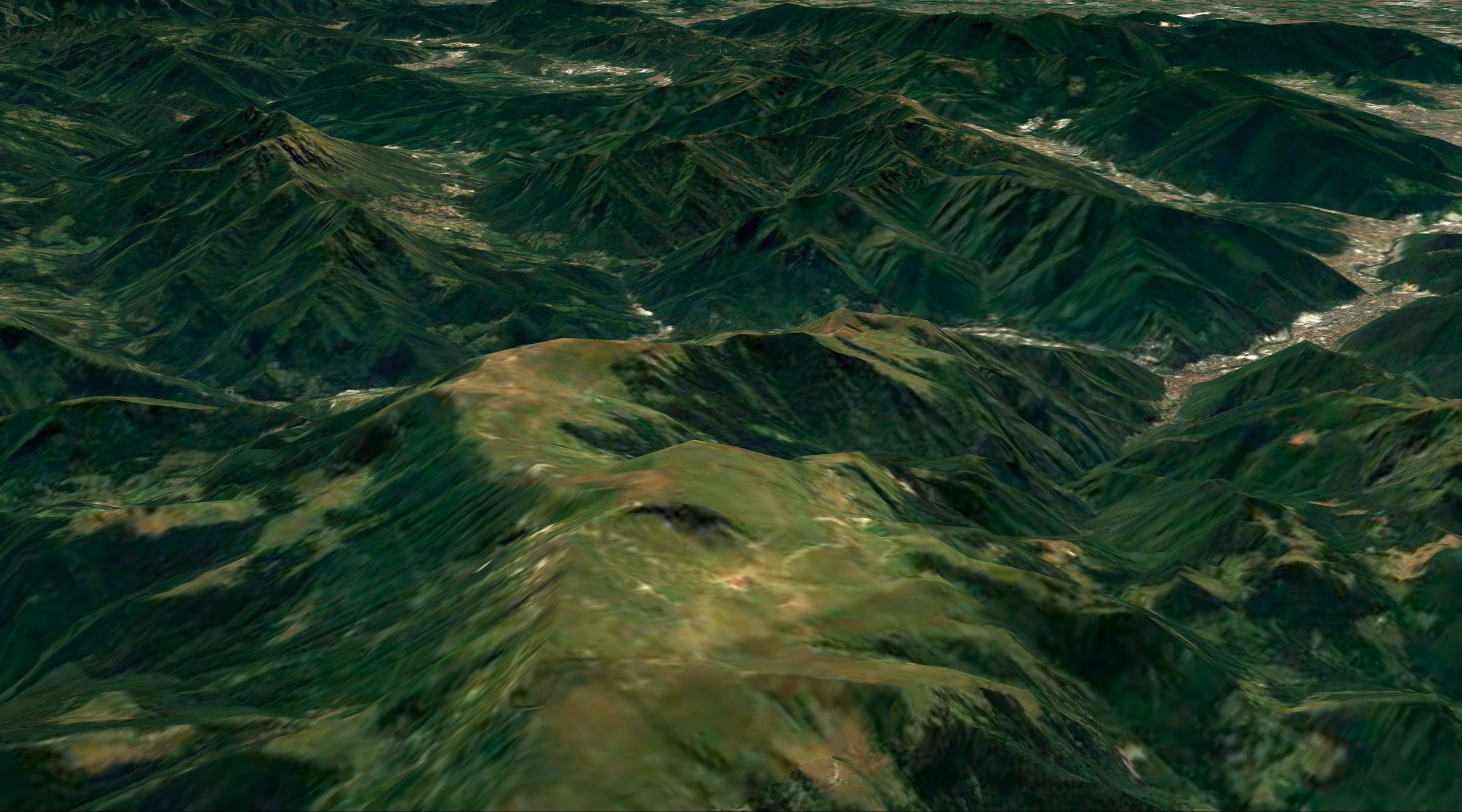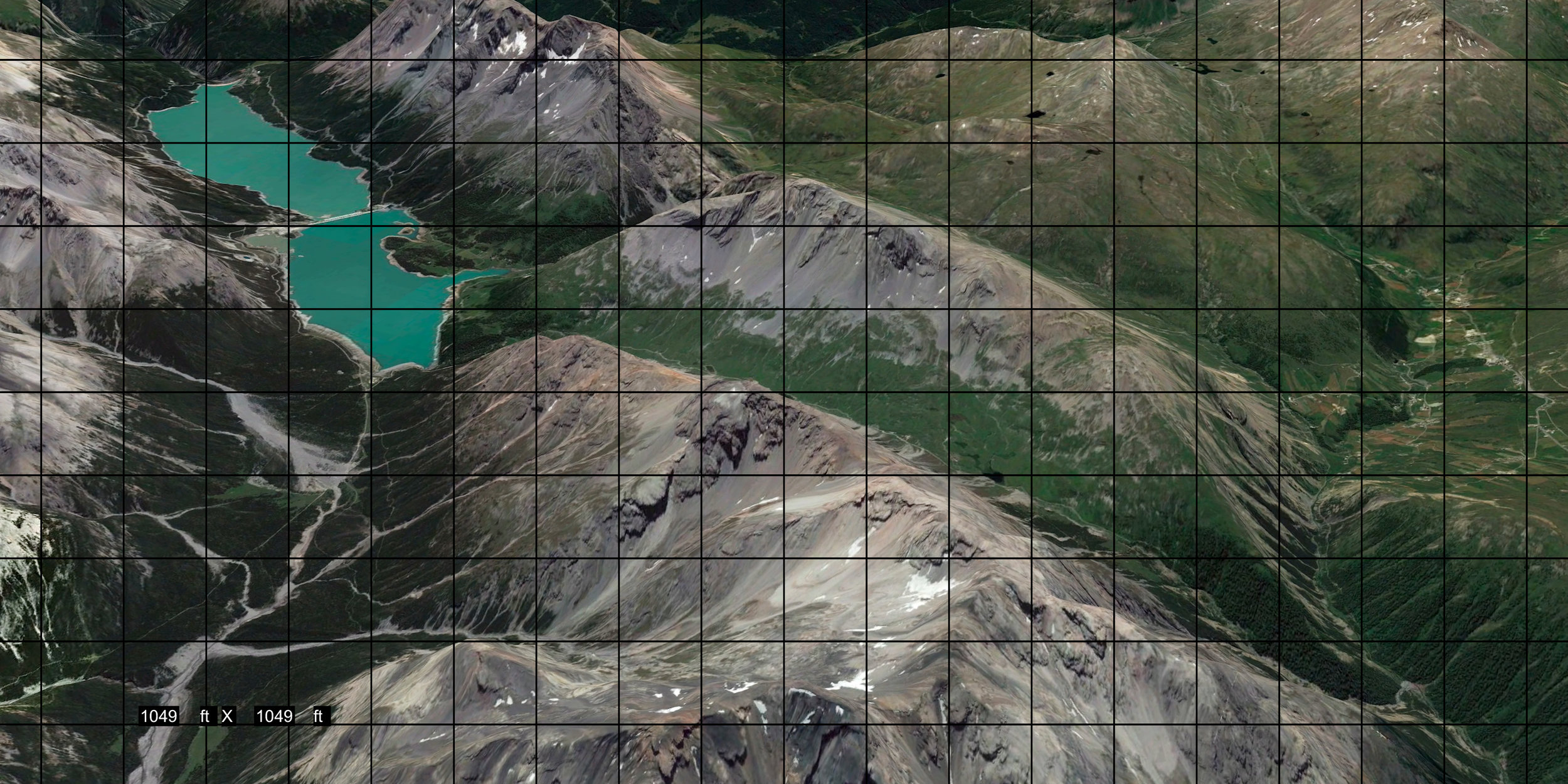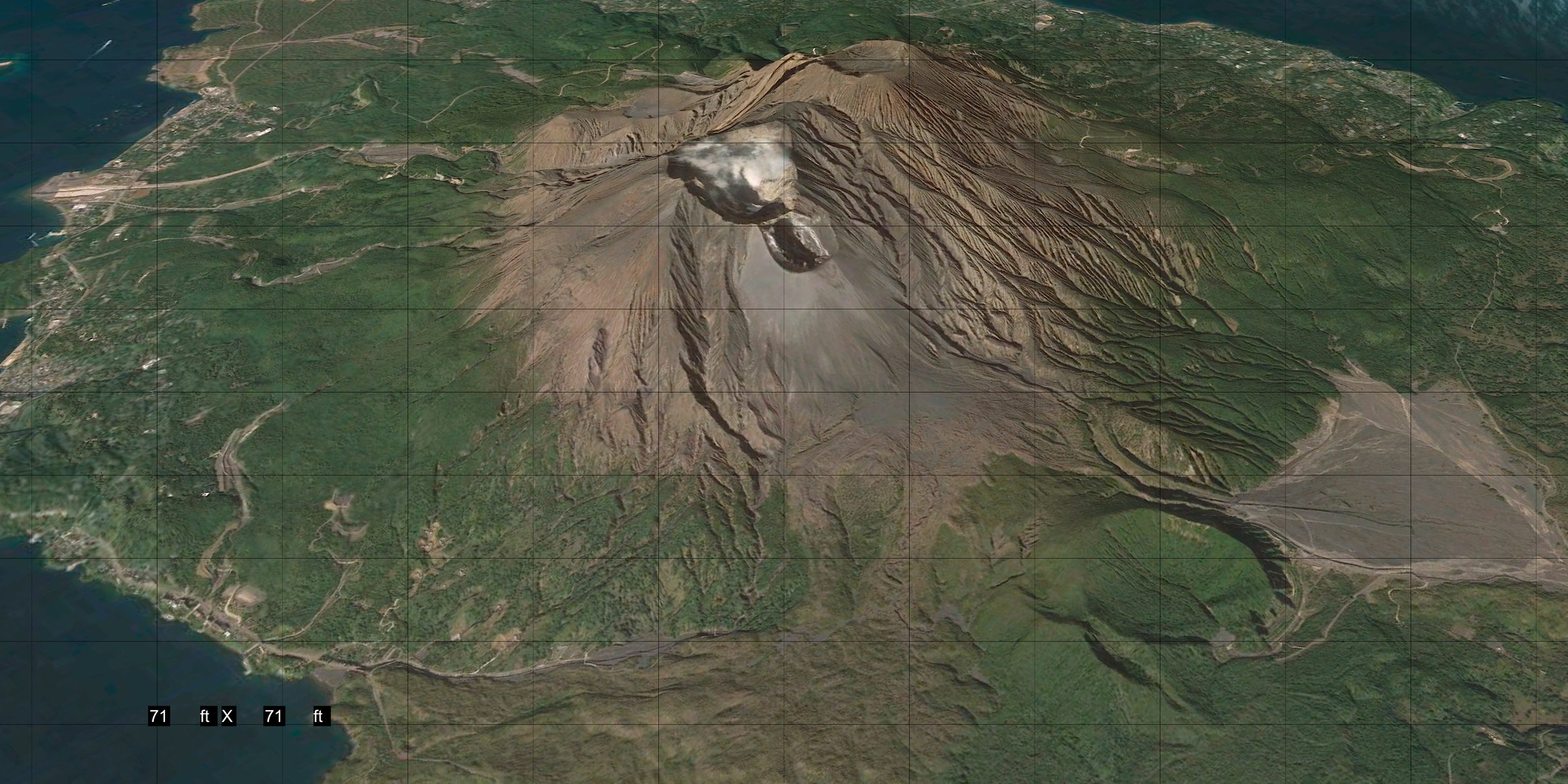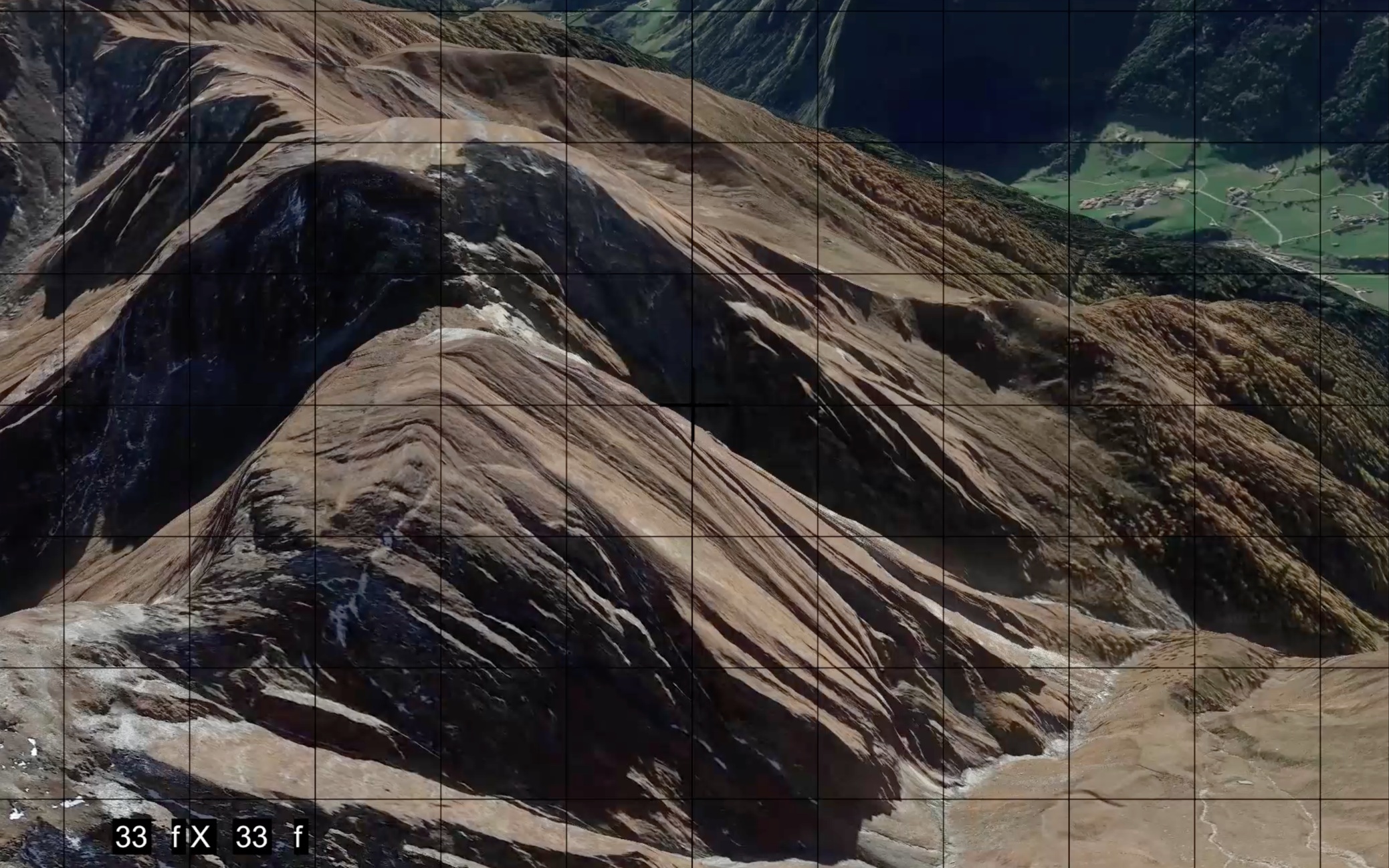FURLONG | A search for Terra Nullius | 2018/9
MULTI CHANNEL MOVING IMAGE INSTALLATION
Channel 1: 8.14 min, Channel 2: 6.35 min, Channel 3: 3.52 min | SOUND DESIGN BY KEVIN TOUBLANT
Furlong is a disused term to describe an acre’s length. The work questions the need to mark and occupy territories, create borders while exploring ideas of mapping and owning grounds.
The first and third channel travel through time using digital maps from the last century, in Europe, the Mediterranean and Middle East, finding out that historical and political changes have left their marks in the geological texture of the land and in the sea. In the second channel, an animated graph illustrates the measurements of the territories, as they move, on the other screens. While exposing the military device for scanning the ground from above, the journey through the repetitive, strategic, mechanical process of measuring also articulates a frantic search of an untouched, unknown, perhaps fictional place: Terra Nullius— a land which isn’t occupied, owned or inhabited.
Primeval mountains, ancient terrains, and oceanic voids: by capturing the texture of the land and its natural features, the vertical view in the work longs to reveal the secret histories beneath the surface, unfolding magical yet turbulent scenarios to imagine new worlds.
Furlong was part of NEU NOW, an initiative of ELIA:
existed from 2009-2017 as a transdisciplinary art festival devoted to presenting the work of exceptional emerging artists across Europe. This special, digital publication, wraps up the project as it existed with a digital publication, showcasing the work from one artist selected from each of the nine years.
https://issuu.com/elia-artschools/docs/neu_now_2019_digital_publication_-_v8_final_26.9.1
In September, 2019 a tenth and final edition of NEU NOW as it existed was digitally published in the event documentd below, and an installation was presented at the closing of the ELIA Academy 2019 in Stuttgart, Germany
https://vimeo.com/378983672
This Project was part of a group show at The koppel project, London
Texts by Chantal Faust, Curated by Paula Zambrano
https://thekoppelproject.com/events/natur-blick
"I think I scan, I think I scan, I think I scan. And I touch, in order to see. Scanning is a visual movement, a sweeping glance, a skim, an analysis, and a conversion. To scan is to look quickly, and also to look carefully. In the digital realm, scanning demands proximity, it is intimate in this way. The seeing eye of the machine is a reader of surfaces, recording traces of a perceptual and tactile encounter. In the land of the flatbed, touch, vision, and memory become inseparable. In this sense, the seeing organ is more akin to a tongue than an eye, a close-up form of perception and ingestion, licking blindly in the dark." Chantal Faust 2018
Review: http://thisistomorrow.info/articles/natur-blick
Furlong was part in ÜberMauer_BAM: Biennale Arcipelago Mediterraneo
BAM-Mediterranean Archipelago Biennial, Italy. 2019. It was part of
http://bampalermo.com/ - https://bampalermo.com/events/gili-lavy-furlong/
ÜBERMAUER, THE EXHIBITION / http://fondazionemerz.org/en/exhibitions/ubermauer_bam-biennale-arcipelago-mediterraneo/
This takes the form of an exhibition project spread throughout the city of Palermo bringing together historical and unpublished works by established international artists like Shilpa Gupta, Alfredo Jaar, Emily Jacir, Zena el Khalil, Shirin Neshat, Damián Ortega, Michal Rovner e Driant Zeneli, Italian artists or residents in our country like Francesco Arena, Claudia Di Gangi, Patrizio Di Massimo, Claire Fontaine, Giuseppe Lana, Andrea Masu and Gili Lavy and Palermo-born artists such as Stefania Galegati, Ignazio Mortellaro and Michele Tiberio, who will open their studios to a series of visits and public meetings.
